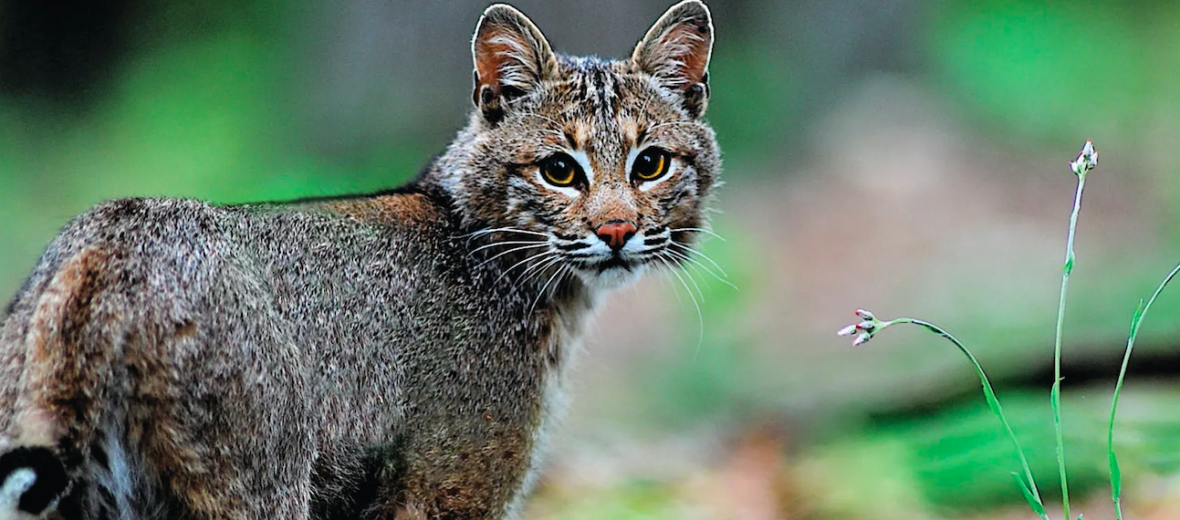
The bobcat is often confused with a lynx due to the similarity of size and the telltale ear tufts. Bobcats and lynx live in different locales though and the lynx is larger, shaggier, has larger feet, faded spots, and are more gray in color; as opposed to the reddish color of the bobcat. These beautiful animals can be seen, with luck, from Canada down to Mexico. Even though they have a large range, you’ll be lucky to spot one as they are very stealthy and cautious of strangers.
First the Stats…
Scientific name: Lynx rufus
Weight: Up to 30 lbs.
Length: Up to 2.3 feet
Height: Up to 21 inches, at the shoulders
Lifespan: Up to 16 years
Now on to the Facts!
1.) Since the lynx and bobcat’s territories overlap at the border of U.S. and Canada, some hybrids (crossbreeds) have been witnessed.
2.) Their main prey animals include rabbits, rodents, birds, and other small creatures. But, these critters can also take down adult white-tailed deer. They typically go after fawns, but they have been seen killing adults. To put it in perspective, an adult white-tailed deer can weigh 250+ lbs!
3.) Bobcats are crepuscular (active at dawn and dusk).
4.) Death from above! Bobs can climb trees very well and will sometimes use this higher ground to pounce on prey just below them.
5.) They will also cache (hide) their uneaten prey by burying their kill in dirt, leaves, or snow. Then come back later for leftovers.
But wait, there’s more on the bobcat!
6.) Due to human encroachment, bobcats have started moving into suburban locales so the chances of spotting one is increasing. Hide your medium to small dogs and cats as they can very easily become dinner!
7.) A single bobcat will keep watch over multiple dens.
Did you know…?
Bobcats are able to jump as high as 12 feet and can run up to 34 mph!
8.) Cougars, wolves, owls, coyotes, & foxes, regularly kill and dine on bobcat kittens. Also, in Florida, invasive pythons have taken a toll on the bobcat population.
9.) They communicate via scent markings and vocalizations like chortles (chuckle-like calls) and birdlike chirps.
10.) The range of a male bobcat overlaps that of numerous females. This allows them to mate with more than 1 female.
But wait, there’s still more on the bobcat!
11.) Once the kittens are born, the female will chase away the male to avoid cannibalism.
12.) The offspring are called bobkittens. How cute is that?
Now a Short Bobcat Video!
Also, check out the Critter Science YouTube channel. Videos added frequently!
Want to suggest a critter for me to write about? Let me know here.



